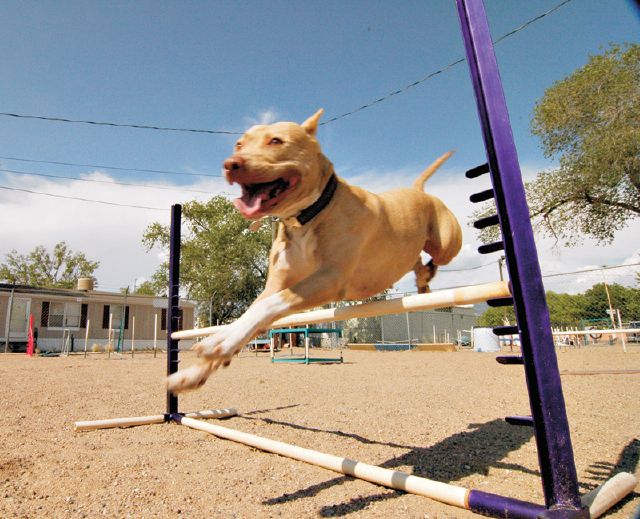Feature
The Real Pit Bull Problem


One of Lisa's many highly trained pit bulls going through an agility course at Acoma Training Center
Wes Naman

Baby, a four-year-old pit bull at the Eastside Animal Care Center, was dropped off one morning because her owner’s landlord wouldn’t allow pit bulls on the property. Luckily, Baby was adopted later the same day.
Christie Chisholm

Vixen, one of Lisa’s best agility-trained pit bulls, shows off at Acoma Training Center.
Christie Chisholm

Lisa’s eight pit bulls pose for a portrait.
Christie Chisholm








